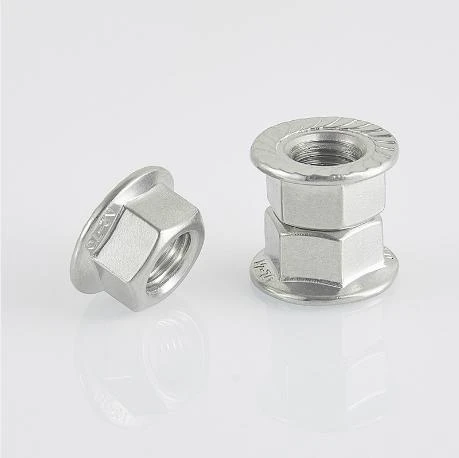

Understanding DIN 125 Plain Washers for Mechanical Applications and Uses
نومبر . 28, 2024 04:44 Back to list
Understanding DIN 125 Plain Washers for Mechanical Applications and Uses
Understanding Plain Washers Focus on DIN 125 Specifications
When it comes to mechanical engineering and construction, the components used can significantly affect the durability and performance of structures and machinery. One such essential component is the plain washer. Among various standards for washers, DIN 125 is widely recognized in industries around the world. This article delves into the characteristics, specifications, and applications of plain washers, specifically following the DIN 125 standard.
What is a Plain Washer?
A plain washer is a flat, disc-shaped piece of metal that is used to distribute the load of a threaded fastener, such as a bolt or nut. By providing a larger bearing surface, washers help to prevent damage to the workpiece and ensure a more secure fastening. They also act as spacers, shims, or seals in various applications, adding to their versatility in manufacturing and assembly processes.
An Overview of DIN 125
The “DIN” in DIN 125 refers to the Deutsches Institut für Normung, translating to the German Institute for Standardization. This organization sets quality standards for industrial components in Germany and internationally. The DIN 125 standard specifically outlines the dimensions and tolerances for plain washers, ensuring consistency and compatibility in applications.
Key Specifications of DIN 125 Washers
1. Material DIN 125 washers are typically made from a variety of materials, including carbon steel, stainless steel, and non-ferrous metals like aluminum or brass. The material choice is pivotal, as it affects the washer's strength, corrosion resistance, and overall performance. For example, stainless steel washers are ideal for environments prone to moisture, while carbon steel washers might be used in less corrosive conditions.
2. Dimensions The DIN 125 standard provides specifications for washers in different sizes, primarily defined by the inner diameter (ID), outer diameter (OD), and thickness. The range of sizes allows engineers to select the right washer for specific applications, whether it's securing a small machine component or bolstering a large structural element.
3. Tolerances Tolerances are crucial in washer manufacturing, as they determine how closely a part meets its specified dimensions. DIN 125 washers have prescribed tolerances that ensure uniformity, minimizing the risk of failure in applications where precision is critical.
plain washer din 125

4. Finish The surface finish of a washer can influence its performance, especially in high-friction applications. Washers following the DIN 125 standard may come with various finishes, including plain, galvanized, or coated, to enhance their protection against wear and corrosion.
Applications of DIN 125 Washers
The versatility of plain washers makes them suitable for a broad range of applications across various industries
- Mechanical Engineering In machinery, DIN 125 washers are employed to distribute the load of bolts and nuts, preventing damage to surfaces and ensuring even pressure distribution, thus enhancing the reliability of mechanical assemblies.
- Construction In construction, washers are used not only for fixing structural elements but also for leveling surfaces and spacing components to achieve desired alignments.
- Automotive In the automotive industry, plain washers are vital for securing engine parts and other critical components, where they help absorb vibrations while maintaining structural integrity.
- Electrical Applications In electrical assemblies, washers are used to provide electrical insulation and secure connections, safeguarding against wear caused by movement and thermal cycling.
Conclusion
Plain washers, particularly those adhering to the DIN 125 standard, play a crucial role in the functionality and reliability of numerous mechanical and structural systems. By understanding their specifications, material properties, and applications, engineers and designers can make informed choices that enhance the durability and performance of their projects. Whether in large-scale construction or intricate machinery assembly, the proper selection of a plain washer is key to achieving optimal outcomes. As industries continue to advance, the importance of adherence to recognized standards like DIN 125 will only increase, ensuring that quality and safety remain at the forefront of engineering practices.
Latest news
-
Hot Dip Galvanized Bolts-About LongZe|High Strength, Corrosion Resistance
NewsJul.30,2025
-
High-Strength Hot Dip Galvanized Bolts - Hebei Longze | Corrosion Resistance, Customization
NewsJul.30,2025
-
Hot Dip Galvanized Bolts-Hebei Longze|Corrosion Resistance&High Strength
NewsJul.30,2025
-
High-Strength Hot-Dip Galvanized Bolts-Hebei Longze|Corrosion Resistance&High Strength
NewsJul.30,2025
-
Hot Dip Galvanized Bolts-Hebei Longze|Corrosion Resistance&High Strength
NewsJul.30,2025
-
Hot Dip Galvanized Bolts - Hebei Longze | Corrosion Resistance, High Strength
NewsJul.30,2025

